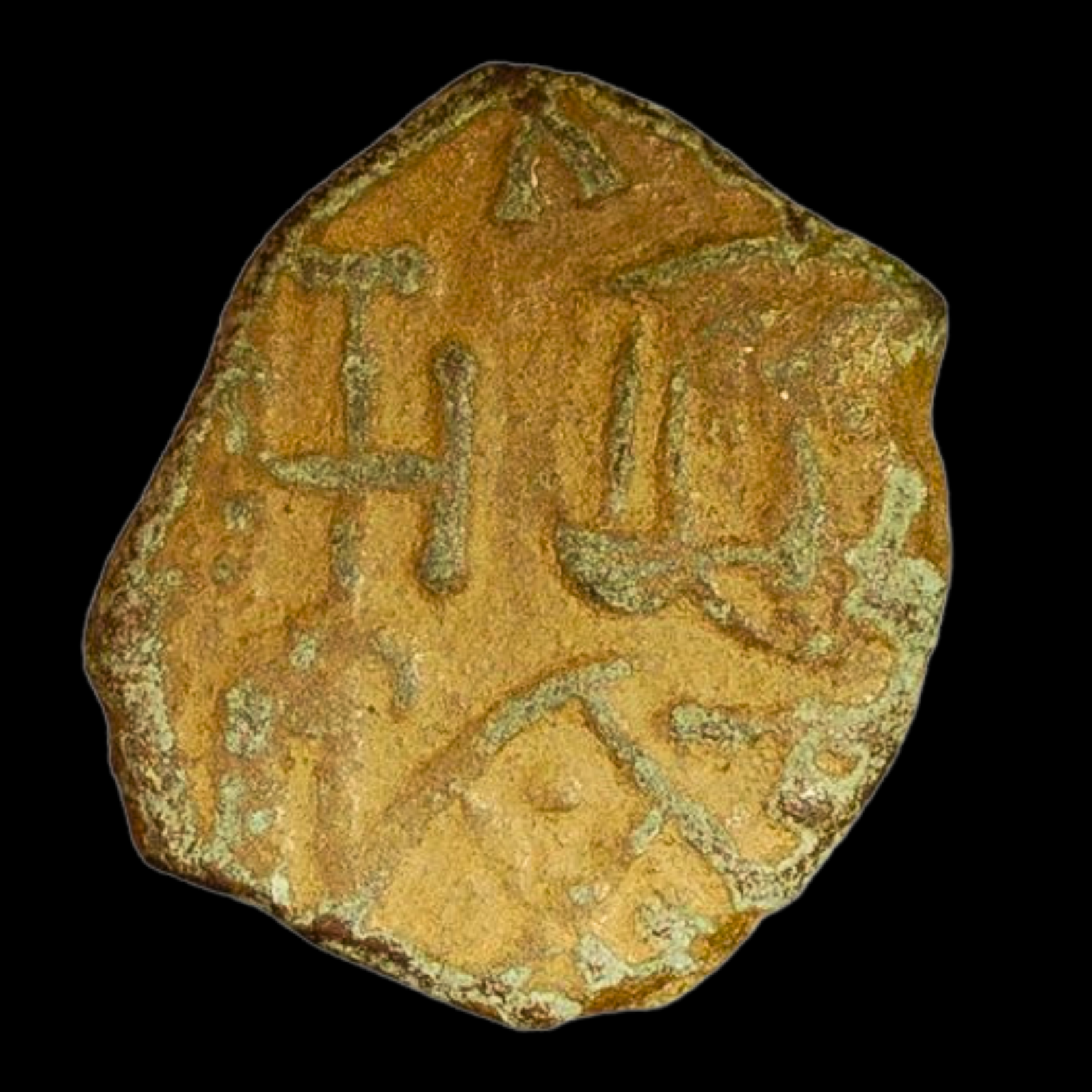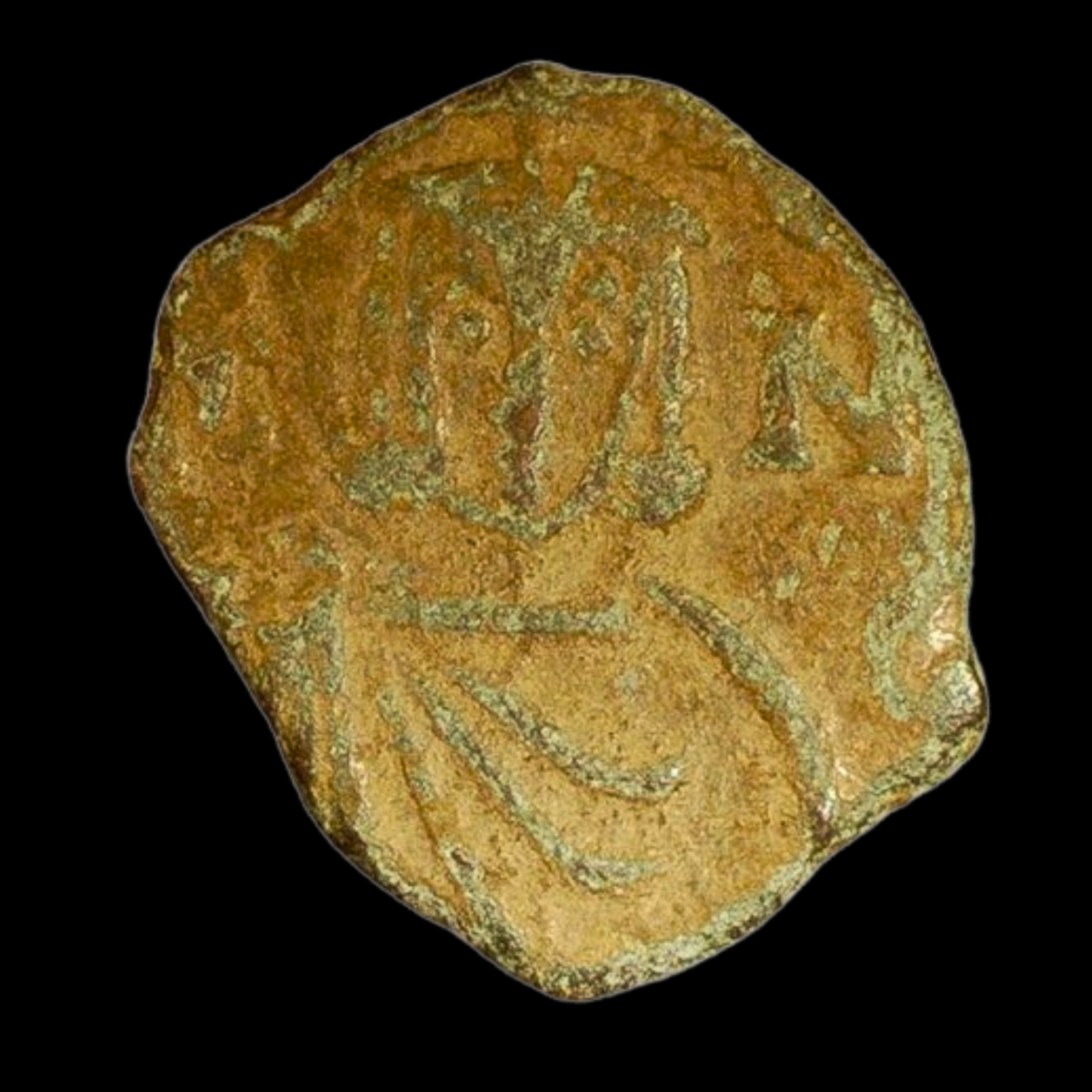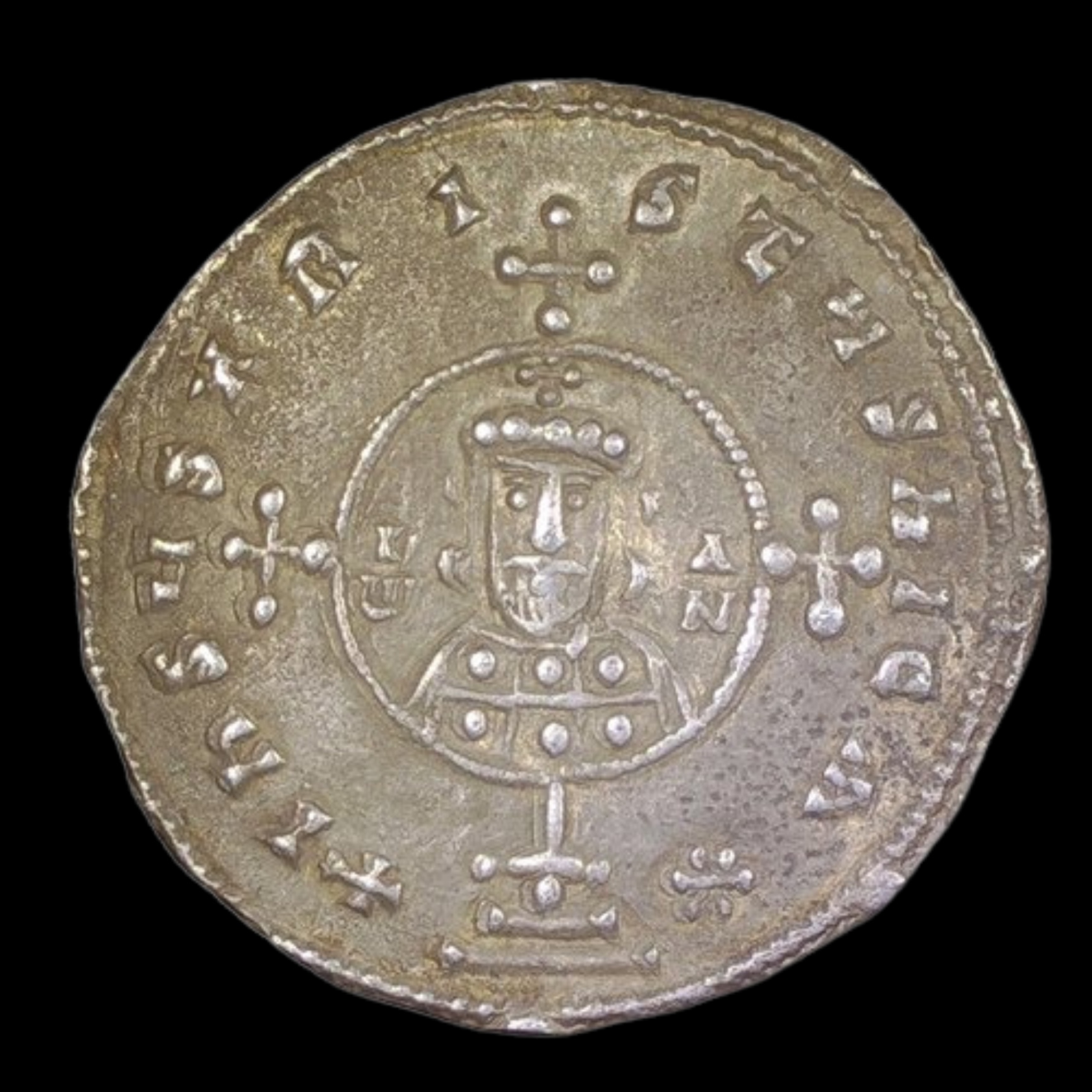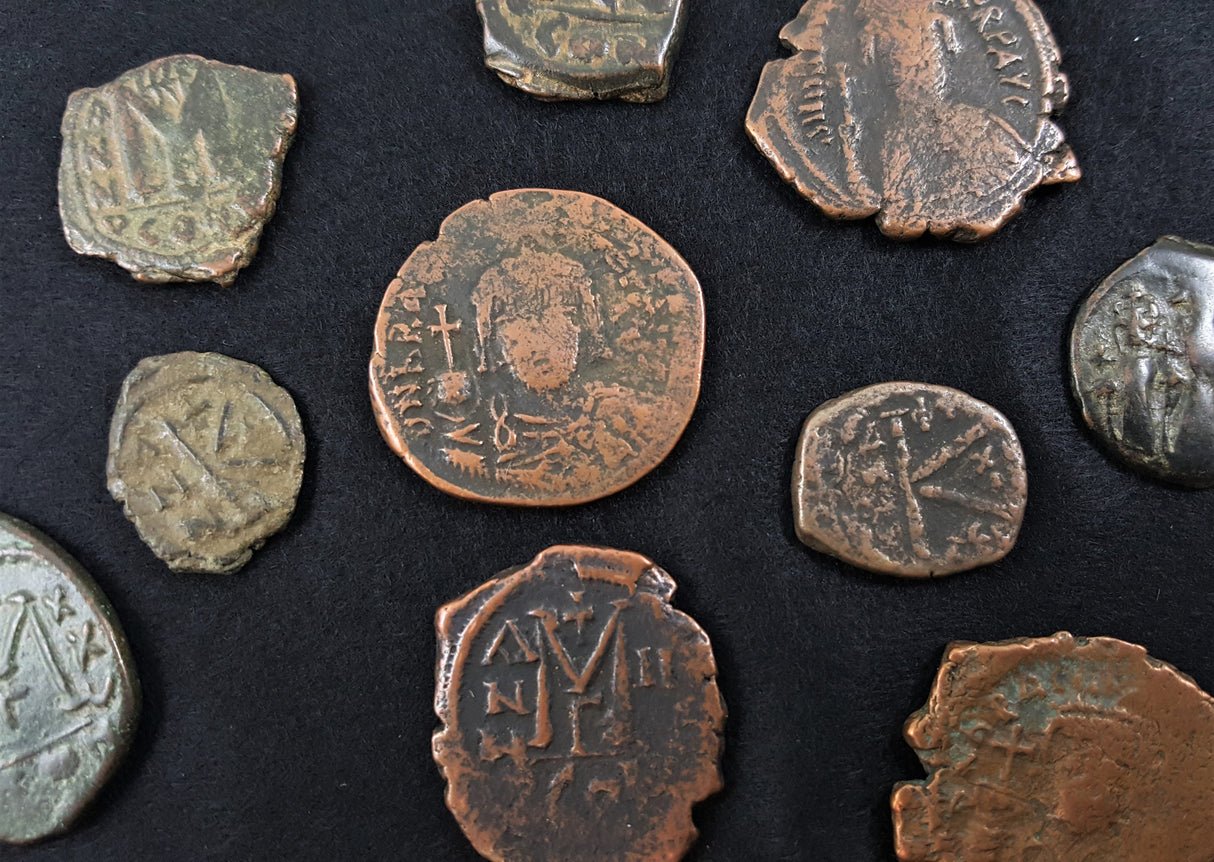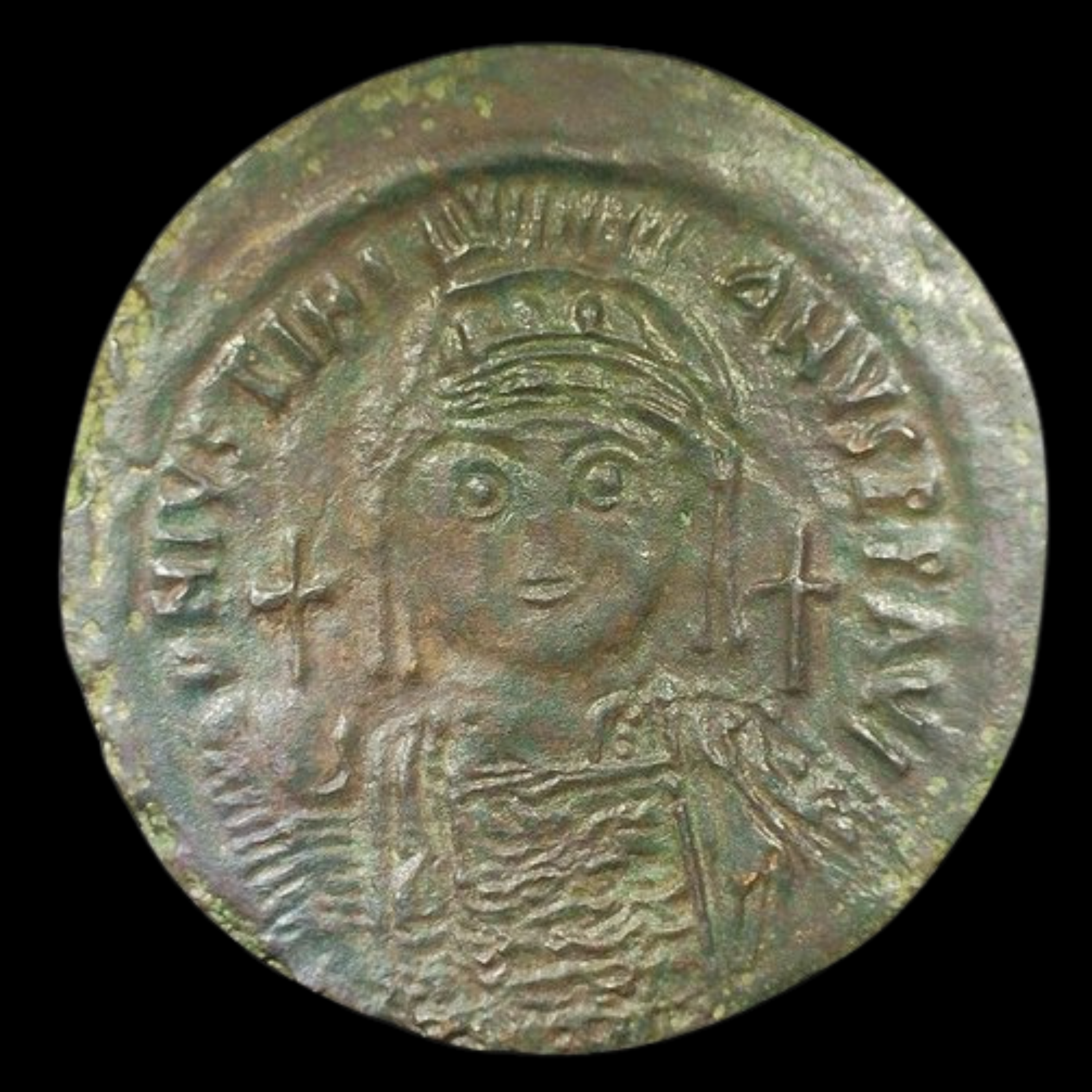 Image 1 of 2
Image 1 of 2

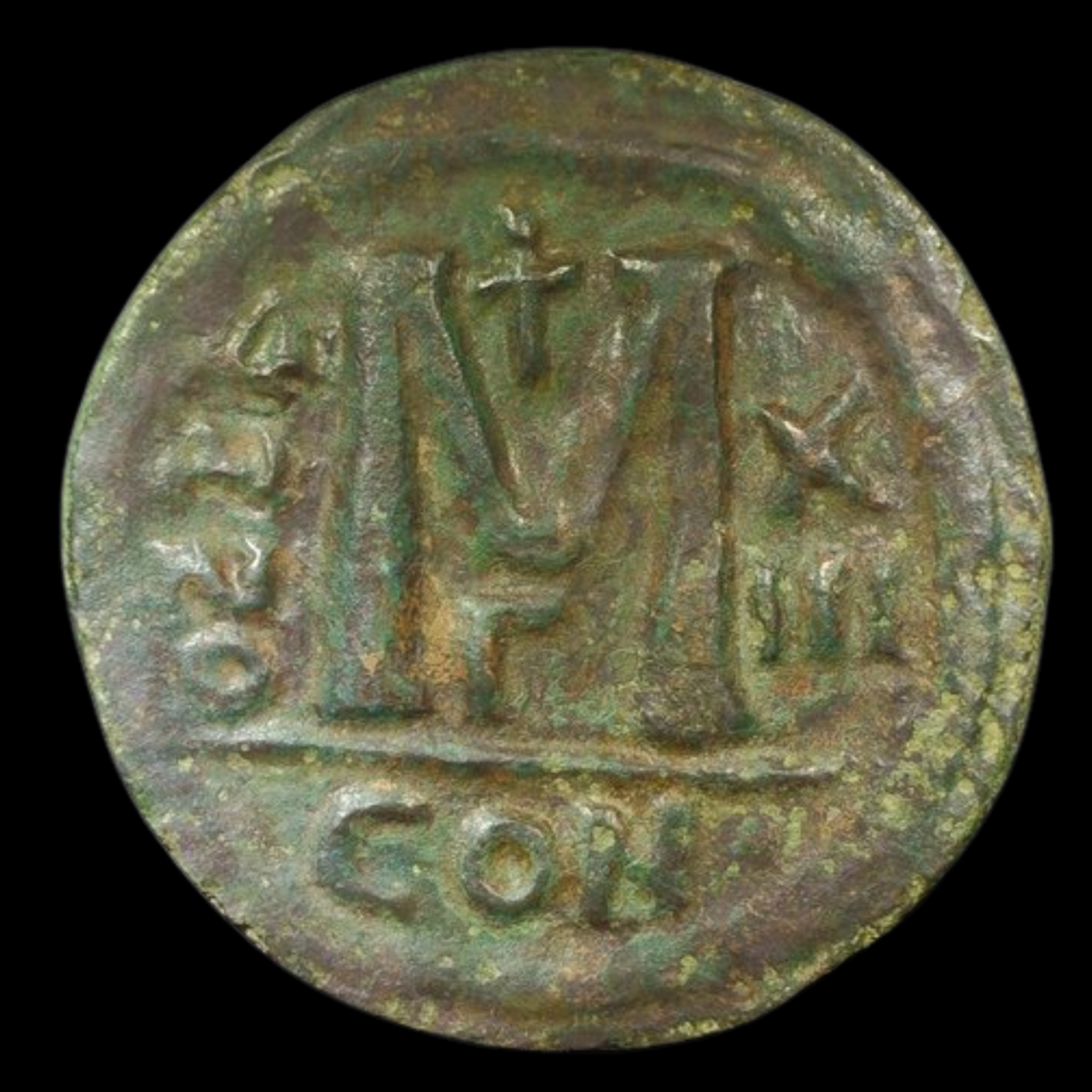 Image 2 of 2
Image 2 of 2



Byzantine Follis of Justinian I (about 1500 years ago)
This substantial bronze coin was minted in Constantinople (modern Istanbul, Turkey) during the early reign of Justinian I, one of the most significant Byzantine emperors. The large bronze follis was part of Justinian's monetary reforms aimed at stabilizing the economy of the Eastern Roman Empire.
Coin Description:
Front side: Helmeted and armored bust of Justinian I facing forward, holding cross on globe and shield, with Latin inscription "DN IVSTINI-ANVS PP AVC" (Our Lord Justinian, Father of the Country, Augustus)
Back side: Large letter M (Greek numeral for 40) between "ANNO" and "XII" (Year 12); cross above; mint mark "CON" (Constantinople) in exergue (bottom section)
Technical Details:
Bronze composition (weighing 19.07 grams)
Follis denomination (40 nummi, a common Byzantine bronze coin)
References: Berk-217, DO-37c, MIB-95
No certification mentioned
Date: 523/9 CE (12th year of reign)
Condition: Not specified
Historical Significance:
This coin was struck during the early reign of Emperor Justinian I, shortly before he would launch his ambitious campaign to reconquer the lost western provinces of the Roman Empire. The Byzantine Empire (Eastern Roman Empire) was entering its golden age, with Constantinople (modern Istanbul) serving as the wealthiest city in the Mediterranean world. The prominent Christian symbolism on the coin reflects how Christianity had become central to imperial identity, while the use of Latin inscriptions maintained continuity with Roman tradition.
This substantial bronze coin was minted in Constantinople (modern Istanbul, Turkey) during the early reign of Justinian I, one of the most significant Byzantine emperors. The large bronze follis was part of Justinian's monetary reforms aimed at stabilizing the economy of the Eastern Roman Empire.
Coin Description:
Front side: Helmeted and armored bust of Justinian I facing forward, holding cross on globe and shield, with Latin inscription "DN IVSTINI-ANVS PP AVC" (Our Lord Justinian, Father of the Country, Augustus)
Back side: Large letter M (Greek numeral for 40) between "ANNO" and "XII" (Year 12); cross above; mint mark "CON" (Constantinople) in exergue (bottom section)
Technical Details:
Bronze composition (weighing 19.07 grams)
Follis denomination (40 nummi, a common Byzantine bronze coin)
References: Berk-217, DO-37c, MIB-95
No certification mentioned
Date: 523/9 CE (12th year of reign)
Condition: Not specified
Historical Significance:
This coin was struck during the early reign of Emperor Justinian I, shortly before he would launch his ambitious campaign to reconquer the lost western provinces of the Roman Empire. The Byzantine Empire (Eastern Roman Empire) was entering its golden age, with Constantinople (modern Istanbul) serving as the wealthiest city in the Mediterranean world. The prominent Christian symbolism on the coin reflects how Christianity had become central to imperial identity, while the use of Latin inscriptions maintained continuity with Roman tradition.


